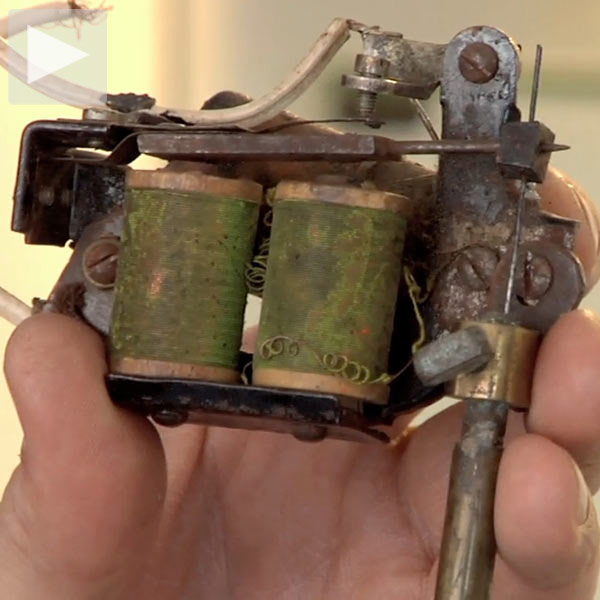Creative Future
The new print project from a promising Danish art student


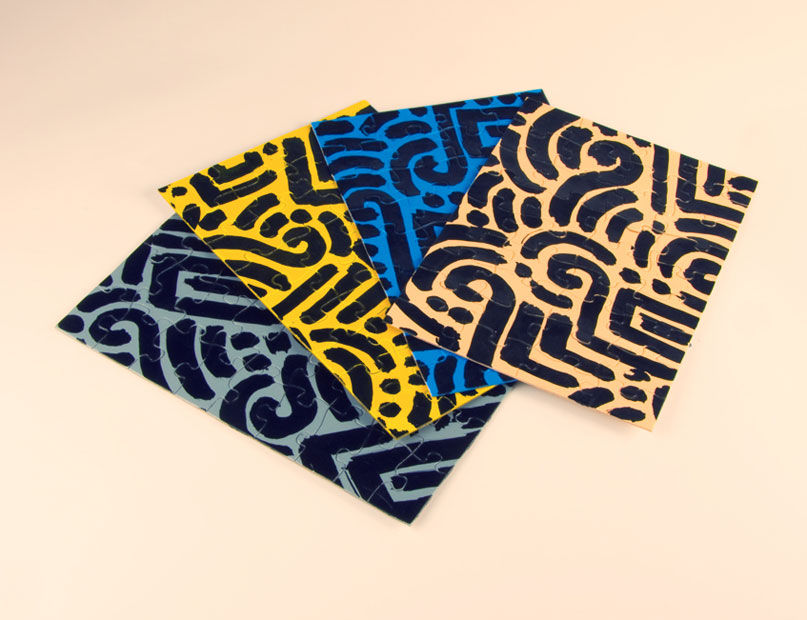
At just 18 years old, Danish art student Christian Andersen is already striking out on his own with a highly detailed and imaginative publication called Creative Future. Working out of his room in his parents’ basement, Andersen spends “hours upon hours” creating what he thinks of more as an art project than a magazine, with a goal to “inspire and lift the creative spirits within.” Having just released the second edition, Andersen is very much the major operating act behind each issue, but says that, overall, “Creative Future is really a collaborative project, because it’s formed by everyone who’s been a part of the creative process since the first pencil line was drawn.”
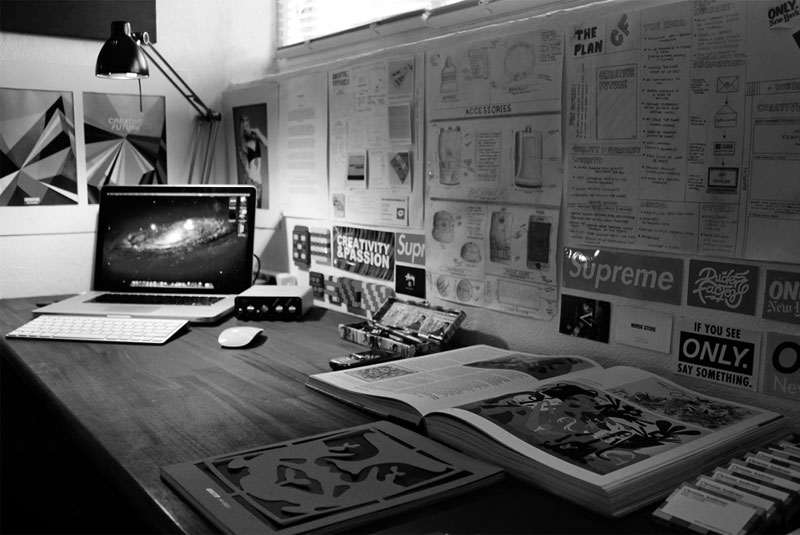
In addition to the print project, Andersen updates his website with a host of other thoughtful works, using a laptop covered in Supreme stickers to bring his colorful style to videos (be sure to check out “The Street Aesthetic of New York City“), paintings, photography and even furniture. With clearly a bright future ahead of him, we recently asked Anderson to tell us more about the making of Issue #2, what inspires him and how he manages to be so productive. Read the interview below, and pick up the latest edition of Creative Future online, which includes a hand-painted puzzle by San Francisco-based cover artist Aaron De La Cruz.
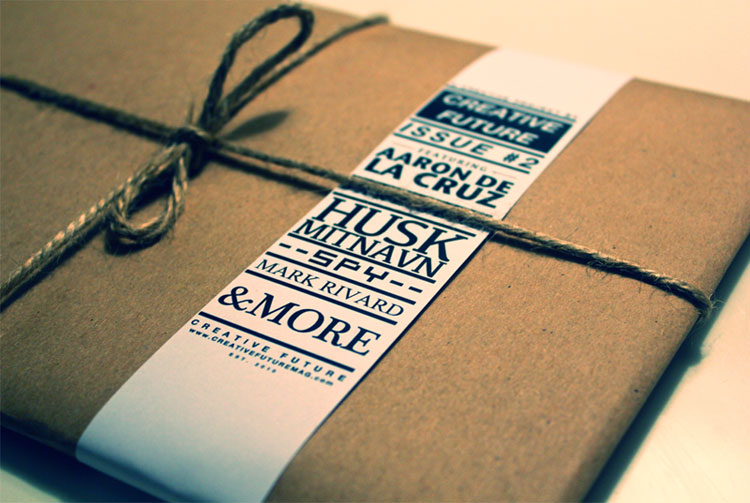
In what ways is the publication itself a work of art?
Looking away from the content, I really think it is the way the publication is presented. When we create Creative Future we go through a long process, choosing the right materials for the issue. Every magazine we’ve put out so far has literally been put together by hand. And that’s one of the major reasons why we think each magazine is an artwork in itself. None of them are exactly the same. Besides that, the main feature of each issue gets the chance to design the cover and an exclusive item for the project. In this issue Aaron De La Cruz did an amazing job hand-painting 50 limited puzzles to include in Issue #2, all hand-numbered and signed in his studio in San Francisco. I think it is those kinds of things that makes Creative Future special.
It’s not just another magazine featuring a couple of articles and interviews. We put hours upon hours into the small details of each the issue, by experimenting with different design techniques, types of paper and packaging. That is also why we don’t set a specific release date for our publications before we are 100% satisfied with the content and look. We don’t want to compromise if it affects the quality of the publication.
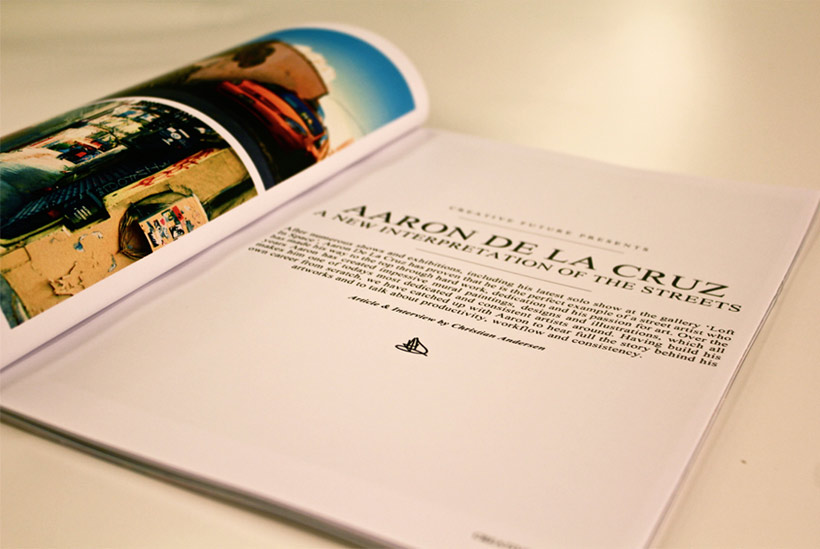
You chose the work of Aaron De La Cruz for the cover, what strikes you most about his style?
Aaron is a really talented artist who has an incredible story to tell. I think the thing that strikes me most about his style is how he manages to stay consistent, yet innovative about his work. The very minimalistic look in his artworks sets some special parameters and limitations where he can express himself freely and creatively. This is also one of the reasons why his art is recognizable. When you first look at his artworks they may see simple at first, but it is sometimes important to understand the higher meanings in the broad range of mediums Aaron uses. As he says, “Just because you don’t literally see it doesn’t mean that its not there.” So I really think the ideas and visions behind his style are what strike me the most.
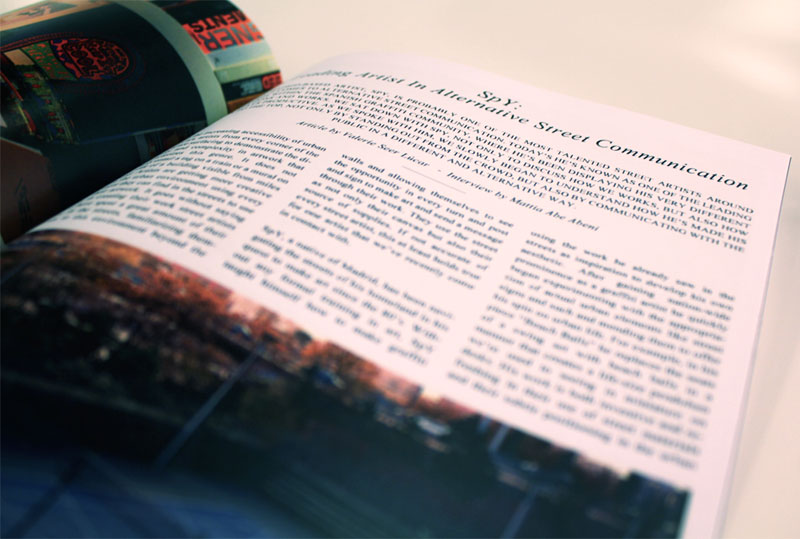
Is street art the medium you find most inspirational?
I think street art and the whole culture surrounding it are very inspirational and motivating. The thing that strikes me most about street art is the fact that the world of street art is constantly evolving and reinventing itself. The great thing about street art is that it refuses rules of categorization, but at the same time connects with the traditional art world. It might be illegal, but I wouldn’t consider it pure vandalism. I do find a lot of inspiration in street art and art done in the streets, but as far as my favorite medium goes, I think it’s a mix of more than just one medium.
So even though I’m not a hardcore street artist, I still think street art and graffiti are very interesting, especially because they’re part of this generation’s modern society. All over the world, there are magazines, art galleries and websites dedicated to street art and graffiti. That kind of thing wasn’t around just two decades ago, so I definitely think that we’ll see more street art and urban art forms in the future. The attitude towards street art is constantly changing.
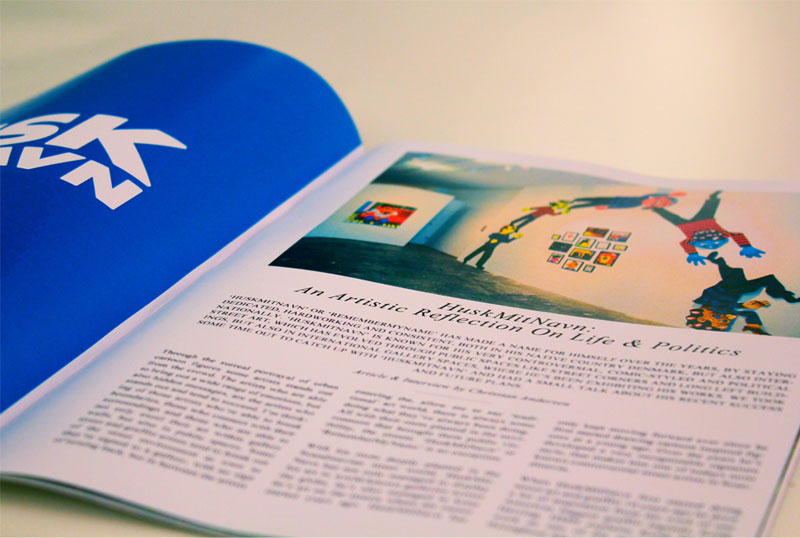
How would you describe your own style? Would you say the magazine reflects that?
I think the Creative Future Project is a great reflection of my own style and I somehow think there is a connection between Creative Future and the career I am trying to establish in art. I think my own style is very energetic, colorful and quite contemporary. I find a lot of inspiration in urban art forms, as I mentioned, so without knowing it, I think there’s a connection between my art and the Creative Future Project. With the Creative Future Project I have the chance to speak with some of the artists I’m inspired by. I think my own style is still progressing and developing, so by being able to speak with other artists in industry, I somehow learn new things. So while I’m not locked onto one particular way of doing things, I think the Creative Future Project somehow helps me to explore and learn. I’m still experimenting with different mediums and techniques in art myself, so with only one year behind me as an artist I find it hard to describe and define my style.

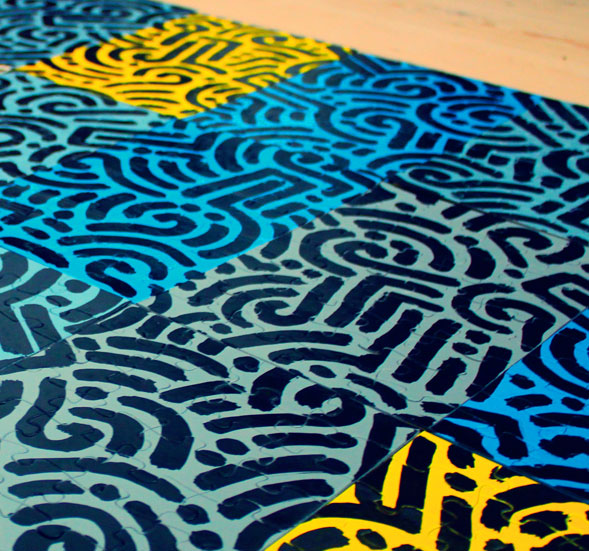
What is one of your favorite aspects of this issue?
I really like the fact that we have been able to go beyond what we have done previously. We have been able to experiment a bit more in this issue compared to Issue #1, so I really think we’ve set the bar a little higher in this issue. We have not only reinforced the look, layout and quality, but also managed to include some very interesting features and interviews. So by attacking the unfamiliar and unknown with new creative approaches, I feel we’ve been able to take the Creative Future Project to the next level. In terms of my favorite aspects of the issue, I really like what Aaron has contributed. He has just done an incredible job on the puzzles. Besides that, I’m really satisfied with the look and quality of this issue. When comparing this issue with our first publication, I really see a positive transition.

How do you manage so many successful projects?
Even though it’s sometimes hard to manage it all at the same time, especially with school running on the side, I think you will be able to make things work if you’re dedicated and hard-working. You only live once. Do the things you love, and enjoy the people around you. In order to make a change you need to stay curious and believe in what you do. If you want things bad enough, they will happen.
What makes you most excited about the future?
I’m really exited to see how my art and Creative Future will develop in the next couple of years. My future is quite uncertain because I’m still in school. I’ll be done in a year and a half and I have absolutely no clue of where I am headed, so I really think it is quite exiting to see where I’ll be in just two years. I feel like my art projects are starting to look very promising and the uncertainty just makes me hungry for more. I feel like I have a lot more to accomplish and achieve in the future and my mind is currently filled with ideas and visions for future projects.
I really find the uncertainty very motivating and exciting. I guess I’ll just continue working towards an imaginary goal. I don’t know what it is yet.
